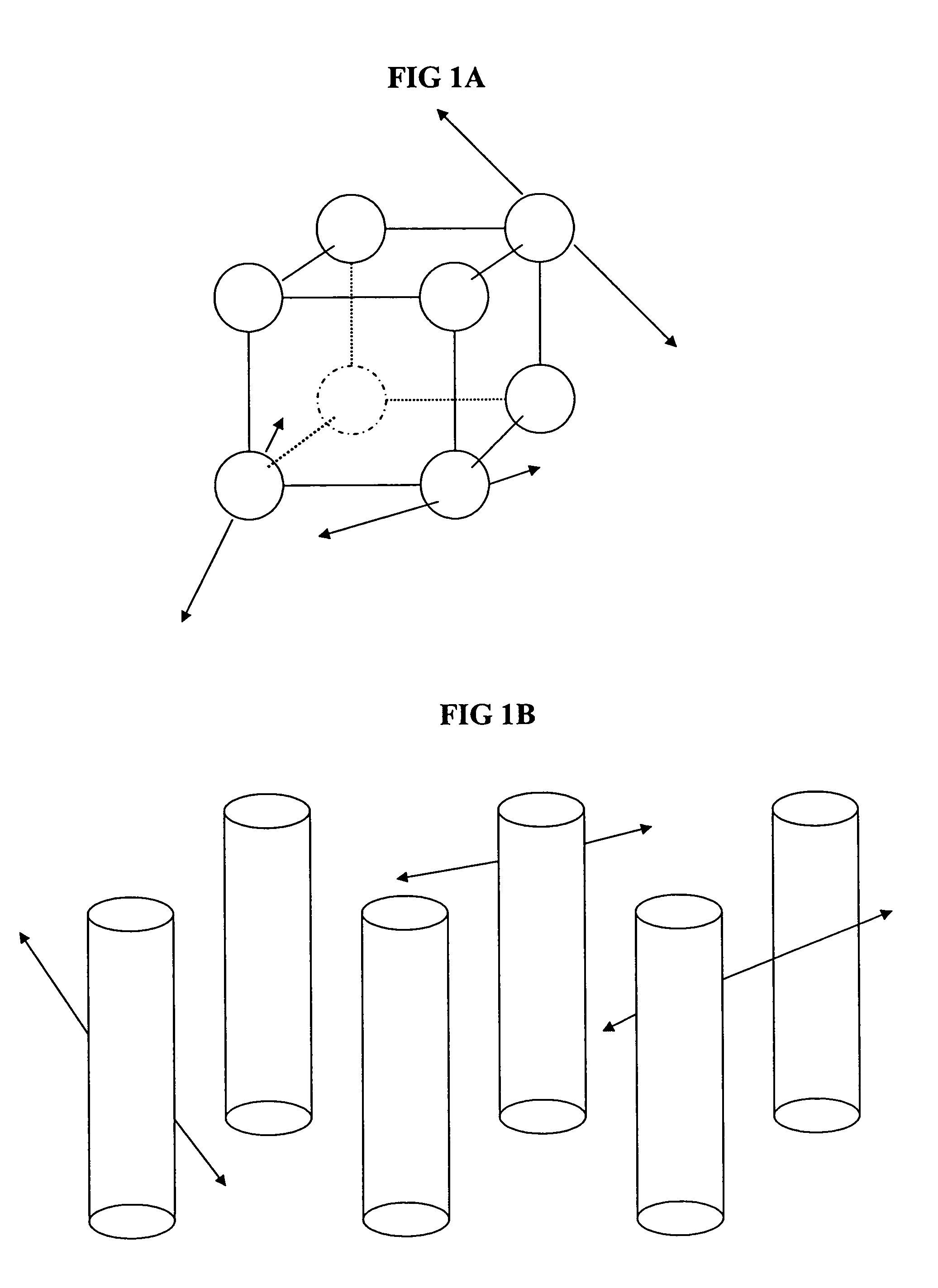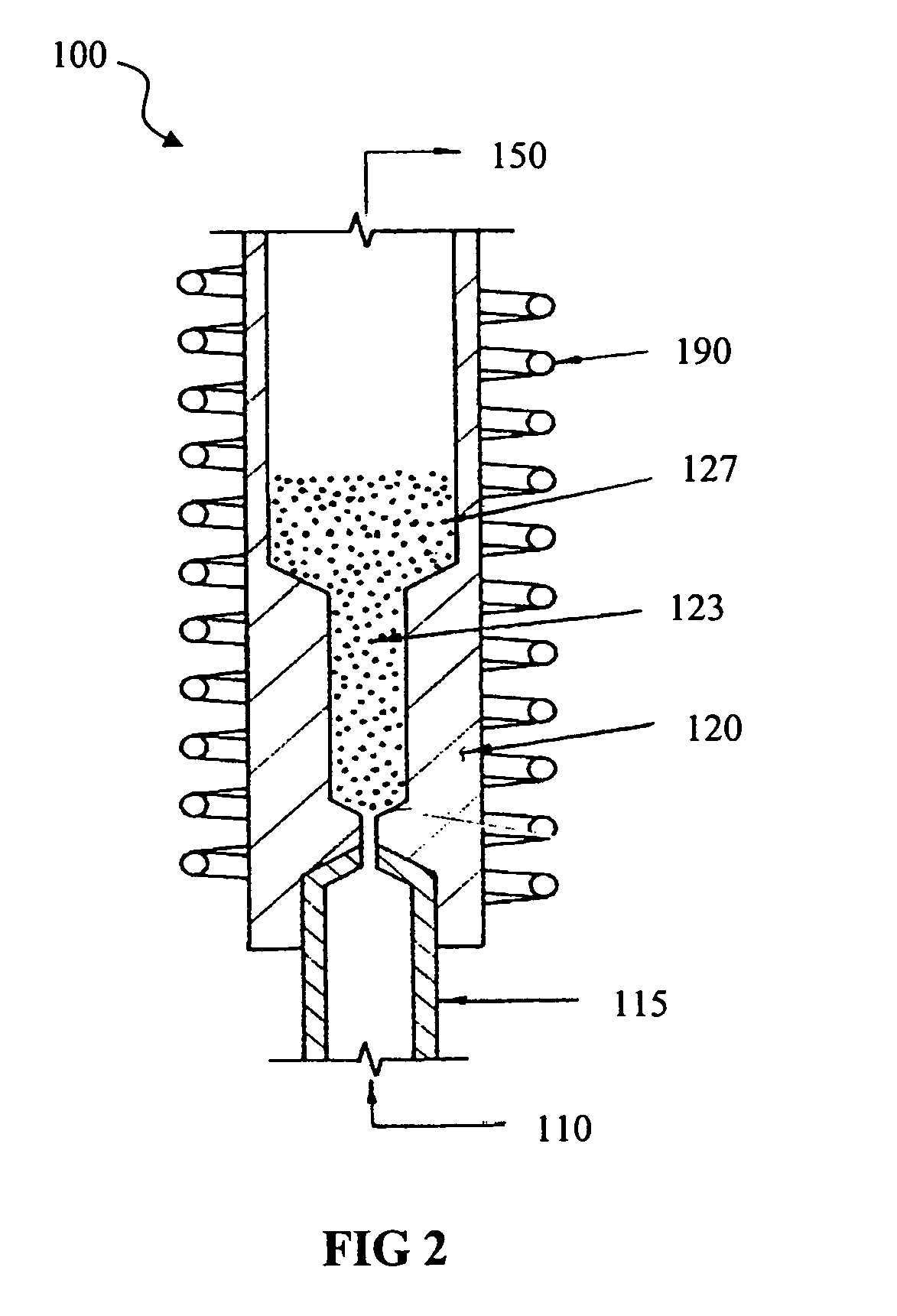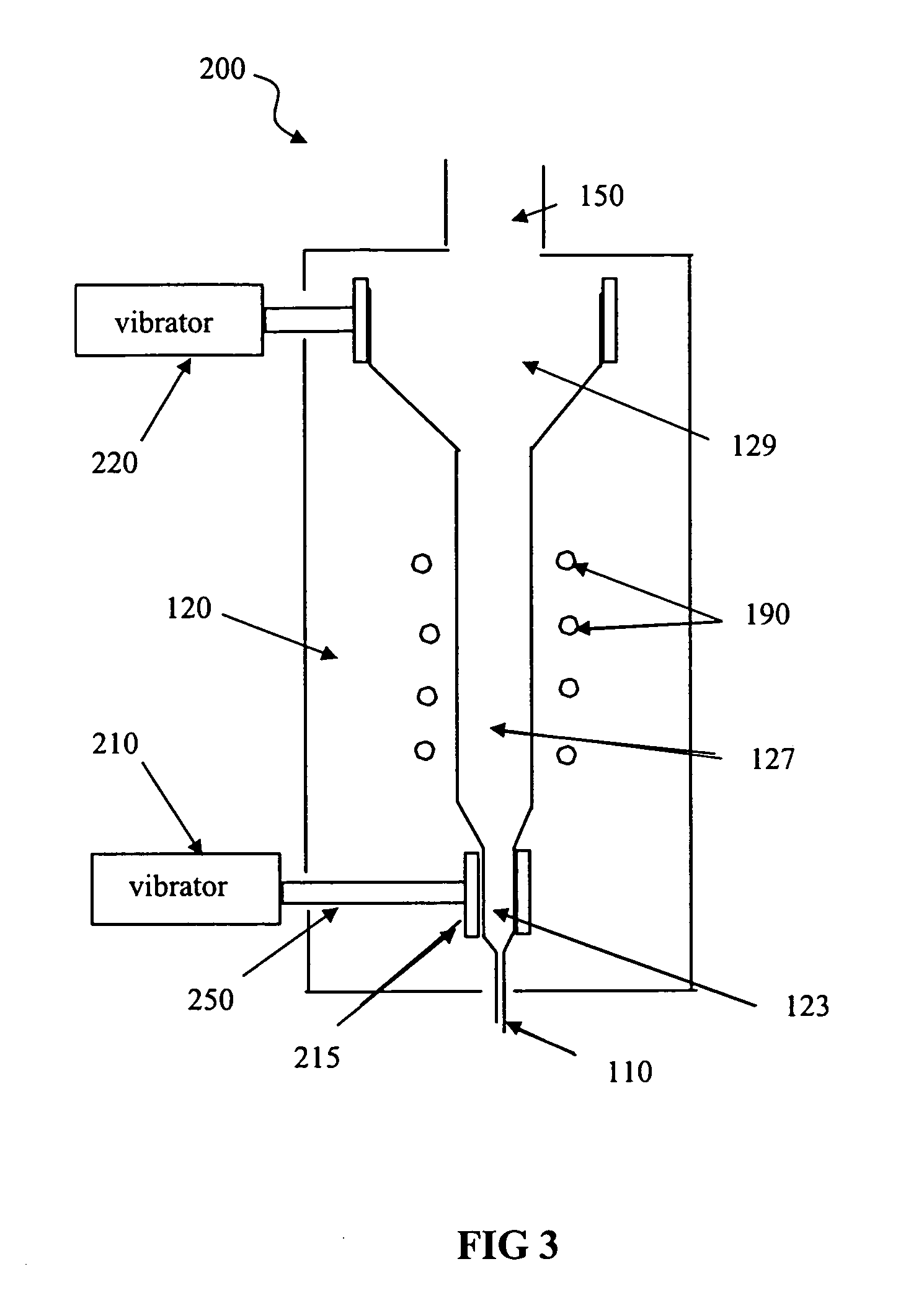Methods and apparatuses for the development of microstructured nuclear fuels
a nuclear fuel and microstructure technology, applied in the field of nuclear fuels, can solve the problems of high radioactivity of spent fuel assemblies taken from the reactor core, complex uranium or ‘nuclear fuel cycle’, and high so as to reduce the cost of advanced fuel cycle
- Summary
- Abstract
- Description
- Claims
- Application Information
AI Technical Summary
Benefits of technology
Problems solved by technology
Method used
Image
Examples
Embodiment Construction
[0026]Referring to FIGS. 1A and 1B, microstructured fuels contain fissile material structures with micrometer-scale dimensions dispersed in a matrix material. Most fission products escape from the fissile material structures and come to rest in the matrix material. This can allow a much cheaper separation of the fission products and fissile material, after the fuel is removed from the power system and allowed to cool for a number of years. FIGS. 1A and 1B is a schematic drawing that illustrates the tracks of fission products (arrows) as they escape from an array of fissile material structures. In FIG. 1A an array of spherical particles of fissile material (e.g., enriched UO2) is pictured with pairs of arrows generally representing the tracks of fission products as they travel out of the fissile particle and eventually come to rest in the surrounding matrix material that separates the spherical particles. In FIG. 1B a cylindrical array of channels filled with fissile material is show...
PUM
 Login to View More
Login to View More Abstract
Description
Claims
Application Information
 Login to View More
Login to View More - R&D
- Intellectual Property
- Life Sciences
- Materials
- Tech Scout
- Unparalleled Data Quality
- Higher Quality Content
- 60% Fewer Hallucinations
Browse by: Latest US Patents, China's latest patents, Technical Efficacy Thesaurus, Application Domain, Technology Topic, Popular Technical Reports.
© 2025 PatSnap. All rights reserved.Legal|Privacy policy|Modern Slavery Act Transparency Statement|Sitemap|About US| Contact US: help@patsnap.com



